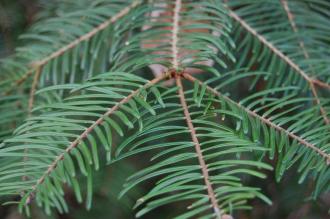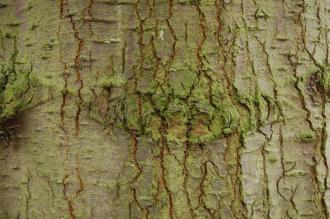
Abies grandis (30/12/14, Kew Gardens, London)
Position: Full sun to light shade
Flowering period: Spring
Soil: Moist, well drained
Eventual Height: 70m
Eventual Spread: 8m
Hardiness: 3a, 3b, 4a, 4b, 5a, 5b, 6a, 6b, 7a, 7b, 8a, 8b
Family: Pinaceae
Abies grandis is an evergreen coniferous tree with a narrowly conical habit. Its dark green glossy leaves are needle like, flattened, up to 6cm long and 2mm wide. Its trunk may achieve a diameter of up to 1.5m. Its grey/ light brown bark is smooth, becoming fissured with age. Its male flowers are pale yellow pollen cones. Its fruit are upright barrel shaped cones, up to 7cm long and 3.5cm broad, yellowish when young, maturing to a gray color.

Abies grandis Leaf (30/12/14, Kew Gardens, London)
Abies grandis, commonly known as Grand Fir, Giant Fir or Lowland White Fir, is native to the Pacific north west of North America. In its native habitat it grows in mixed coniferous woodland at an altitude between 0m – 1,800m.
The etymological root of the binomial name Abies is derived from the ancient Latin name for the Fir tree. Grandis is from the Latin meaning ‘large’.
The landscape architect may find Abies grandis useful as an attractive evergreen tree for parkland or large gardens.

Abies grandis Bark (30/12/14, Kew Gardens, London)
Ecologically, Abies grandis seeds are attractive to some birds.
Abies grandis prefers moist, humus rich, fertile, well-drained soils. It will tolerate most pH of soil.
Abies grandis requires little maintenance.

